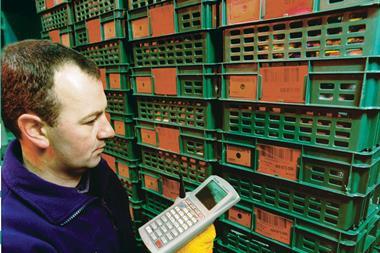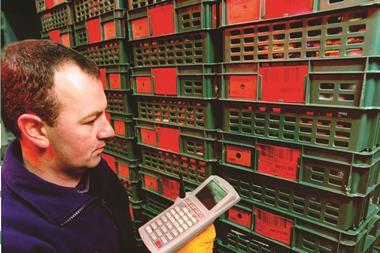A key part of understanding RFID is to look at examples and learnings from the companies that are already using this revolutionary technology.
Over the past few weeks we’ve talked about the benefits of RFID and the reasons it’s so suited to apparel. You’ve stuck with me while I’ve explained the breakdown of readers, tags, software, the EPC standard and how to manage serialisation. But as important as it is to have a theoretical understanding of RFID, it’s also very much an operational tool. A key part of informing yourself on RFID is to look at examples and learnings from the companies that are already using this revolutionary technology.
And because I like to go out with a bang, my last blog post will be a two-part feature over the next fortnight covering the key case studies of RFID in the real world. Happy reading.
RFID in apparel – the value market
Ten to 15 years ago, the early explorers of RFID looked into the technology and concluded it was indeed valuable but too expensive for retail use. Thanks to the critical mass achieved through the EPC standard, the price of tags has since come down considerably, but the perception that RFID is expensive still lingers. So it’s interesting that the early adopters of RFID in apparel have come from the value market where volume is high but retail price points – which cover the costs of the tag – are modest at best. Walmart, George at Asda, C&A, H&M and Tesco F&F have dived into the world of RFID, each for different purposes. Let’s look closely at two of these.
Walmart
Walmart began looking at RFID in 2003 with the vision of creating an RFID-enabled fool proof, error free and transparent supply chain. Its business case was built on the benefits of better managing inventory, reducing data errors and lowering human labour costs across the supply chain. To do this it tagged all product cases by tagging at source. Such is the weight of Walmart that its initial goal of achieving compliance with 100 suppliers exceeded expectations, with 129 coming on board. Initially there was some resistance but it seems none wanted to be left behind.
Walmart began its pilot by installing RFID readers at receiving docks, between the back room and retail floor and near trash compactors, using 12 pilot stores and 12 control stores to compare the results. As the cases were labelled, any goods shipped into the store were recorded at arrival without needing to be opened. Tags were then read again before being brought to the sales floor – and then the cases were read at a box crusher after the items had been put out. Using this method, Walmart’s RFID project focused on improving distribution processes to better manage its stock – no surprise there really, considering that Walmart views distribution as the key to its success.
Walmart was of the view that RFID wasn’t just about the technology, rather it was about the data it would provide and the role that data could play to inform better decision making. The proof is in the results – from its pilot alone, Walmart was able to improve stock availability with a 16% reduction in out of stocks. Of the items that did go out of stock, these were replenished three times faster than in control stores, leading to increased sales and more orders for its suppliers.
But it wasn’t all smooth sailing. While Walmart was able to drive compliance across more than 100 suppliers, there was some backlash. Suppliers initially balked owing to the added costs and change to their processes. While the benefits of Walmart’s pilot were sufficient to balance out the costs, it brings to light the need to work with your suppliers when implementing RFID. Not all of us have the buying power of Walmart, but introducing RFID is a technology project as much as it is a change management project – you must have buy in from multiple stakeholders to ensure its success. Having a communication plan to sell the benefits to all parties involved and then managing their expectations is vital in achieving this.
Tesco F&F
So while Walmart focused on improving distribution, by contrast Tesco’s clothing label F&F implemented RFID to improve the overall customer experience.
Since its inception, F&F has grown from a tiny clothing category within a giant grocery retailer to one of the UK’s top five apparel brands in terms of volume. As the label continued to grow, the next challenge was to improve stock visibility – which was seen as a key driver for the whole business. By improving stock visibility, F&F hoped to improve the efficiency and accuracy of replenishment from DCs. This would improve the range of sizes and products available to customers, thereby enhancing their store experience.
Unlike Walmart, which started out tagging cases, F&F tagged all apparel at the item level. Garments were tagged at source in the Far East, and F&F partnered with its solution providers to educate suppliers and ensure compliance across the board. Readers were installed in stores in the back of house, goods receiving area and between the stock room and sales floor to monitor product flow. F&F also placed a lot of importance on educating staff – instructing stores on accurately conducting stock takes with hand-held readers and ensuring they had support to implement the new processes.
F&F has not released details of the pilot results to the public. However, the fact that F&F piloted RFID in a few stores and then rolled it out to more than 500, indicates that results exceeded, or at the very least, met expectations of improved inventory accuracy, stock availability and the sales benefits that result from that.
Further to this, F&F has continued to innovate with RFID, moving beyond hand-held readers to trialling robots. The robots are used to take on some of the more manual tasks of RFID – such as data collection or stocktake – leaving the smart analytical work to the human staff.
For those of us not residing under a rock, you’d be aware that while the pilot was taking place, Tesco as a whole was experiencing a number of challenges. To stay on track and expand the project in the midst of a company restructure is a real testament to the strength of F&F’s RFID pilot.
Which leads me to my next learning; RFID is a long-term project with long-term goals. To borrow from a shampoo commercial, ‘the benefits won’t happen overnight, but they will happen’. But to realise this requires commitment and a workable project plan that identifies what good, better and best would look like and realistic timelines for when this will happen.
I’m yet to come across an IT project that doesn’t experience a setback of some description, but you don’t throw the baby out with the bath water. Innovation and change projects are often the first to be abandoned when businesses are down on their luck. Had Tesco done this, it would’ve missed the opportunity to gain control of its inventory and improve the customer experience. Follow its example and approach your RFID project with clear KPIs, workable project timelines and contingency plans for any surprises.
Next week we’ll look at RFID examples from the high street and luxury market. Until then – shameless plug alert – subscribe to our RFID toolkit for a complete guide to implementing RFID in your business.
- Andy Robson is supply chain solutions manager at GS1 UK – a community of more than 28,000 members working in retail, food service, healthcare and more. As one of 111 independent, not-for-profit GS1 organisations across 150 countries worldwide, GS1 helps everyone involved in making, moving and trading goods to automate and standardise their supply chain processes using the common language of business. Find out more here.


























No comments yet